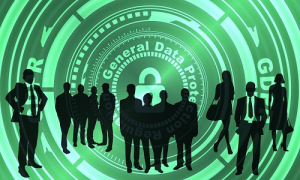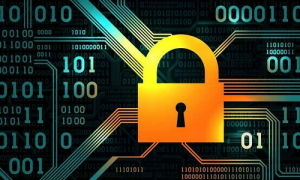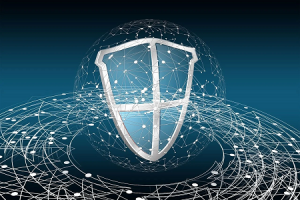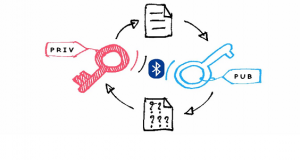Every business depends on tech these days. The number of third-party SaaS solutions out there has made cutting-edge technology easily accessible even for the small business startup.
As entrepreneurs build their tech stacks, though, they need to be aware of a couple of potential issues. The first is security. Cybercrime continues to be a legitimate concern for anyone online. Businesses should take necessary measures to improve and maintain cybersecurity.
Second, owners must make sure that they’re optimizing their small business technology. With so many options available, it’s easy to become buried under an avalanche of 21st-century solutions. This is true even if they aren’t all benefitting you the way they should.
Here are a few suggestions for ways small businesses can both optimize and secure their digital activity to ensure that they’re getting the most out of their tech.
Start with your Wi-Fi.
Your Wi-Fi is the digital gate to your company. In a tech-heavy world, this makes it the main entrance to your tech stack, your files, your data, and your business as a whole. If you want to optimize how your small business works, you need to start by setting the stage with a quality Wi-Fi solution.
The Wi-Fi experts at Plume point out that this obviously includes the need for a strong and dependable wireless signal, but it shouldn’t stop there. As is the case with the company’s small business-focused WorkPass Wi-Fi solution, a good Wi-Fi network should also be safe, easy to use, and intimately woven into the fabric of your business.
By using a quality small business Wi-Fi solution, you can simultaneously tap into the simplicity and ease of residential routers as well as the firepower of an enterprise-level internet connection.
Small business Wi-Fi has the potential to double as a business intelligence (BI) platform that collects and turns data into actionable insights. This can help you manage your workforce and communicate with guest users. It can also keep your entire team engaged with adaptive connectivity that is fast, reliable, and ultra-secure.
If you want your small business to be productive and secure at the same time, make sure to start by using a reputable and capable small business Wi-Fi solution.
Establish solid cybersecurity.
Cybersecurity can be intimidating. The need to keep your technology safe and secure from outside threats is an ever-present concern. Many solutions can also be prohibitively expensive — but not all of them.
There are many small-yet-effective ways that you can secure sensitive data while optimizing your small business technology. Intel suggests half a dozen ways to do this, such as:
- establishing a solid private Wi-Fi setup (see the previous step) that doesn’t require logging in on any public Wi-Fi connections;
- keeping hardware upgraded at all times — and, of course, making sure your team installs all software patches and updates in a timely manner;
- using strong passwords and implementing MFA (multi-factor authentication) whenever possible;
- utilizing apps like Windows 10 Pro security and Norton Antivirus to block unwanted malware; and
- teaching your staff to use proper digital hygiene (maintaining strong passwords, installing updates, etc.) at all times when using office tech.
If you feel like overseeing all of these steps is too much, consider using a Device as a Service (DaaS) solution to increase security. This is a new kind of service that bundles the distribution, management, and IT support for a business’s tech. These are then overseen by a third-party provider, taking the perpetual responsibility off of your plate.
Manage your marketing.
Marketing is one of the easiest areas to bleed cash and ooze inefficiency. This is partly due to the subtle and intangible results that marketing can generate.
If you have a sales team, you can measure their success in dollars and cents. You can apply the same simple math to other areas. These include manufacturing, paying an accountant, or shipping and handling costs.
When it comes to marketing, though, it’s easy to pour endless money into things like content creation and brand awareness without really knowing how effective they are.
If you want to optimize your marketing activity, the first thing you need to do is set up analytics tools to track your results. There are many ways to do this, including free tools, like Facebook Pixel and Google Analytics. In addition, many tools, like Shopify or Mail Chimp, come with built-in data collection dashboards.
Of course, tracking data in a dozen or more applications is challenging. That’s why you may want to consider an additional third-party tool to unify your analytical marketing data. AI-powered solutions like Hawke.ai can bring all of your marketing results into a single dashboard where you can find insights to help you make informed, optimized decisions.
Optimizing and Securing a Small Business (Without Panicking)
There are many factors that go into keeping a business both efficient and safe. For small businesses, this task can feel time-consuming and expensive.
However, if you approach things with a strategy in place, you can manage both concerns without too much trouble. Start by putting things like a solid Wi-Fi solution in place and establishing key cybersecurity protocols. From there, focus on conducting ongoing digital hygiene training. Use the tools available to gather data and turn it into actionable and efficient business strategies, too.
Optimizing small business technology is an assumed aspect of any startup venture at this point. The critical factor is making sure that your tech stack is helping, not hindering, your small business.
If you are looking for an expert to help you find the best solutions for your business talk to GCInfotech about a free technology assessment
Published with consideration from SmallBiz Technology SOURCE













